You are using an out of date browser. It may not display this or other websites correctly.
You should upgrade or use an alternative browser.
You should upgrade or use an alternative browser.
Essential The Official ESPN Insider Thread (ESPN+)
- Thread starter the cool
- Start date
More options
Who Replied?Scouting Deandre Ayton and his future NBA potential
No. 1 overall draft pick Deandre Ayton has been slightly overshadowed so far by other members of the 2018 draft class, including Luka Doncic and Jaren Jackson Jr.
But what kind of potential is the rookie center displaying on the 5-24 Suns, and why is it important to be patient with Phoenix's crown jewel?
The production and situation
Ayton is quietly averaging an impressive 15.5 points, 10 rebounds and 2.5 assists in 30.4 minutes per game with a 60.5 true shooting percentage. No other under-21 player has ever reached those marks, according to our extensive database, and the only under-22 player to do so was Karl-Anthony Towns.
Ayton's tremendous production speaks to his natural ability -- an outstanding combination of size, agility and touch that made him the top pick in June's draft. His glimpses are eye-opening, even if his lows can be baffling. Before diving into his game, it's imperative to provide some context into Ayton's development path to reach this point.
Consider this:
• Ayton came somewhat late to the game, first really surfacing in the States at the 2013 Pangos All-American Camp as a 14-year-old. At Phoenix's Hillcrest Prep, becoming a defensive anchor wasn't a priority and he had total freedom to roam.
• While a standout on the Nike EYBL circuit, Ayton participated in minimal FIBA competition. He had few opportunities to learn on the fly in meaningful games like fellow bigs Wendell Carter Jr. or Jackson had. Simply put, Ayton -- already missing key development years early on -- wasn't always held accountable or tested on the floor before arriving in Tucson.
• Arizona head coach Sean Miller is one of the most prepared and intense coaches in America, especially on the defensive side of the ball, but Ayton played virtually the entire year at power forward. He wasn't known for living in the gym either. He got by on natural ability to post monster numbers.
So comparing Ayton to Doncic right now makes little sense, as Doncic is the most experienced international prospect we've seen. It's also important to be mindful of how Ayton's current situation in Phoenix may accentuate some of his shortcomings. An organization in flux with youth across the board and minimal point guard play isn't the ideal way to shine immediately.
The Suns' director of player development, Cody Toppert, told ESPN that Phoenix keeps a checklist of areas where Ayton can improve both in the interim and long term to make sure that his development remains on track.
Here are some of the areas where he has room for growth.
Defense
Ayton's defensive motor was one of his biggest question marks heading into the draft, and his fluctuating effort has certainly showed up during his rookie campaign.
"I've found that it's a different type of motor in the NBA," Ayton told ESPN. "You have to bring it every game. Most matchups are going at me. You're just on your heels every day. Everybody's watching me. Even when I think they're not, they are. ... I love it, I love the challenge."
Here are his three main defensive priorities.
1. Pick-and-roll nuance
Ayton has little experience as a drop man on screens. He's proved adept at switching, but the Suns generally switch only 1-4 defensively. Phoenix is working with Ayton on the nuances of pick-and-roll defense, emphasizing form, speed and then contact in breakdown drills. So first Ayton needs to grasp the concepts of footwork and technique, then they'll put it to game speed, then they'll add contact with a decision-making component.
Ayton tends to either give the guard an open lane to the rim or overcommit to the ball, resulting in an open lob. The goal for the Suns is to bait opponents into contested midrange shots first and foremost. To do that, there's an element of "cat-and-mouse," as Toppert describes it. Because Ayton was able to get by on sheer athleticism at a young age, he doesn't have the same tricks of players such as Nikola Jokic and Marc Gasol.
This all starts with footwork. When a guard comes off a ball screen going to his left, it's important for Ayton to be high enough to touch the screener while also having his right foot forward, which allows him to both keep the ball in front yet stay behind the screener in case of a lob. From there it's about reading the ball handler and knowing when he's going to attack or when he's going to throw a lob, all while maintaining active hands.
Ayton doesn't take great angles when trying to contain the ball in pick-and-roll. Here he needs to be square to the ball with his right foot up, allowing him to contain and drop, keeping the ball in front while making sure Bam Adebayo doesn't get behind him. Ayton opens up completely, gives Goran Dragic a lane to the rim and gets dunked on:
Similar situation here, where Ayton allows Jordan Bell to get behind him for the lob:
Oftentimes he's completely upright, showing little effort to get out and contain the ball:
Even when he is in the right position, he has a tendency to leave the ball before the guard defender can get back in front. There are also times when Ayton decides to fully commit to the ball, which opens up an easy lob to the roller.
He's still learning how to get square, play center field and bluff-and-recover while guarding both the ball-handler and the roller.
There's no question Ayton has the tools to figure this out. So long as he continues studying his own game film while picking up the tendencies of his opponents, he should absolutely be able to become an asset as a ball-screen defender in time.
"[Head coach Igor Kokoskov] talks about it all the time too with Rudy (Gobert) -- it's not an overnight process," Toppert said. "With Rudy it took about three years to figure out, on the defensive side of the ball, hand activity. The importance of hand activity and how hand activity can often make up for guys being out of position for guys who have great length."
2. Becoming a defensive anchor
The Suns have made it clear that they're challenging Ayton to turn himself into an elite rim protector in the NBA.
"[Kokoskov] really wants me to stay around to protect the rim," Ayton said. "Last year in college I wasn't really around the rim as much. This year I am."
While Ayton is gifted with a 7-5 wingspan, powerful frame, agility and quick-leaping ability, opponents are shooting 71 percent at the rim when Ayton is the closest defender (28th out of 29 players who have defended 100 shots), per Second Spectrum.
Sometimes he can completely lose sight of the ball:
He can improve his positioning and understanding of when to hang around the rim. Here he should be right inside the charge circle ready to rotate, with Nikola Vucevic in the dunker spot:
He doesn't always jump to the ball, limiting shot-blocking opportunities.
And he can have perfect position but opt not to make a play on the ball:
So what are the keys to becoming a good rim protector for Ayton?
"Knowing the floor and knowing where you are," Ayton said. "Once I really start to get the hang of guy's personnel in the league and knowing what people's bread and butter is, I'll start to read them even more and know that I'll always have to protect the rim no matter where I'm at on the court."
For Toppert, it starts with Ayton's pick-and-roll footwork, as that will allow him to be in much better position to challenge shots at the rim on initial drives, in turn putting him in better spots to rotate from the weak side on second-side drives. Ayton has proven capable in drop situations when he can funnel the ball to the rim with sound technique:
A high motor can often cover up technical errors, but with Ayton's hot-and-cold approach along with his raw fundamentals, it's been difficult to fully gauge where his instincts stand. So while things haven't looked promising early in his career, we may not know the caliber of shot-blocker Ayton can become until he gains more experience with in-game reps.
3. Finding a body
Rebounding was Ayton's most ready-made skill, and it's certainly translated from a statistical standpoint. With that said, Ayton is still figuring out when and how to find a body on the glass,
"He's going to fall backwards into eight defensive rebounds a night," Toppert said. "But can he keep his guy off the glass, and can he not only neutralize his guy, but get those out-of-area rebounds after neutralizing his guy? I think there's no reason why he can't be a 15-rebound-per-game guy and do a great job on both sides of the ball."
While developing into a savvy pick-and-roll drop defender or elite rim protector is likely to take years, tightening up his box-out awareness is one defensive area Ayton can own in the short term.
Offense
Part of what made Ayton so intriguing heading into the draft was the fact that he could do a little of everything offensively, but he and his team are still learning where he's most effective on the court.
Here are three areas that will help Ayton offensively:
1. Becoming an elite roller
The first step in Ayton unlocking his offensive potential lies in the details, particularly as a roller. Toppert emphasized Ayton's fundamentals as a screener and coming out of dribble-handoffs as a short-term priority. He touched on Ayton's screening angles and feel for when to hold screens, when to roll out of screens and also when to re-screen if the defender goes under. While it may seem small, these are all moves that bigs pick up through experience,
"All those things force two defenders to commit to the ball, which ultimately open up him," Toppert said. "It's not just to get our ball handler downhill, but again forcing two guys to commit to the ball is going to open up opportunities for him to get deep catches."
This is a perfect clip of Ayton's ideal roll game. He takes a better angle and remains patient with his timing:


Suns Film Room@SunsFilm
https://twitter.com/SunsFilm/status/1073435347965468672
Ayton with the quick spin and lefty dunk.
21
11:31 PM - Dec 13, 2018
See Suns Film Room's other Tweets
Twitter Ads info and privacy
Ayton is close to automatic when he catches deep, as he ranks fifth among players with over 150 shots at the rim in efficiency, converting 68.6 percent of his attempts in the half court. He's extremely nimble, with soft touch and potential as a vertical spacer once he gets a runway.
Now it's about employing the proper footwork and feel to set up those rolls. Of course, adept point guard play also helps, and becoming a more versatile dribble-handoff threat will also expand his offensive game, as he's equipped with the passing and agility to be much more dynamic in those situations.
2. Assertiveness
Maybe Ayton's most important offensive obstacle is learning when to attack, when to shoot jumpers and when to defer. Despite his frame, Ayton is shooting only 2.3 free throws per game -- a number Toppert thinks should be up to six. Too often Ayton floats through games, not knowing when to dive hard, when to pop to midrange, when to dribble into a handoff or when to attack a slower-footed big off the bounce.
Even when he does dive hard with space to operate, he'll freeze up at the sight of help and turn the ball over rather than drawing contact and going up strong:
"Sometimes I'm a little too passive, but I just think it's the right play when I see somebody's open," Ayton said. "That's how I am."
While his passing has certainly been a pleasant surprise, it's playmaking by default at times, as he doesn't feel comfortable going at his man in the block or out of the mid-post. Even around the rim he'll hesitate and panic-fake before kicking the ball out. Toppert said Ayton is still adjusting to the shorter shot clock in the NBA, as far too often the Suns will run multiple actions to get him a post touch and he'll kick back out to repost with nowhere near enough time on the clock.
"It's like, 'No, man, go to work. We want you to go to work. Your teammates want you to go to work,"' Toppert said. "Then it's understanding how to be patient in the post."
3. Lift under jumpers
Once Ayton is able to impose his will physically, he can step out and punish defenders for giving him space. For him to knock down open shots, though, he'll have to explore different ways to get more arc under the ball, as he shoots a line drive to the rim.
Part of what made Ayton so interesting out of Arizona was his potential as a stretch big, which he's yet to show with consistency in the NBA, struggling in midrange and attempting only two 3s (both misses).
"What I do is I shoot in rhythm, I shoot in the offense," Ayton said. "That's how I am. The 3 ball is not there yet because I'm still looking for a decent rhythm with my team to where they know when I pick-and-pop or when I roll."
But Ayton needs to start showing some proficiency in his midrange spots before he can extend his range to 3, and that likely isn't going to happen until he's able to get some lift under his shot.
Looking forward
Given Ayton's development path, to expect much different than what we've seen thus far would have been unrealistic. He needs time to get experience, polish up his fundamentals and learn what it takes to be a star in the NBA.
Will Ayton put in the necessary work to get there and do the Suns have the organizational infrastructure to get the best out of him? Those are questions we'll keep a close eye on as the 2018 No. 1 pick continues to progress through what's been an up-and-down rookie season.
"To me, there's no reason why he isn't a guy who can be a perennial All-Star and a guy who can be in discussion as one of the top defensive players in the league," Toppert said. "Now is it going to take a lot of hard work? Absolutely. But he has the mental capacity without question. He has the personality and he also has the physical tools, so it's our responsibility to help him get there."
Once Ayton is able to impose his will physically, he can step out and punish defenders for giving him space. For him to knock down open shots, though, he'll have to explore different ways to get more arc under the ball, as he shoots a line drive to the rim.
Part of what made Ayton so interesting out of Arizona was his potential as a stretch big, which he's yet to show with consistency in the NBA, struggling in midrange and attempting only two 3s (both misses).
"What I do is I shoot in rhythm, I shoot in the offense," Ayton said. "That's how I am. The 3 ball is not there yet because I'm still looking for a decent rhythm with my team to where they know when I pick-and-pop or when I roll."
But Ayton needs to start showing some proficiency in his midrange spots before he can extend his range to 3, and that likely isn't going to happen until he's able to get some lift under his shot.
Looking forward
Given Ayton's development path, to expect much different than what we've seen thus far would have been unrealistic. He needs time to get experience, polish up his fundamentals and learn what it takes to be a star in the NBA.
Will Ayton put in the necessary work to get there and do the Suns have the organizational infrastructure to get the best out of him? Those are questions we'll keep a close eye on as the 2018 No. 1 pick continues to progress through what's been an up-and-down rookie season.
"To me, there's no reason why he isn't a guy who can be a perennial All-Star and a guy who can be in discussion as one of the top defensive players in the league," Toppert said. "Now is it going to take a lot of hard work? Absolutely. But he has the mental capacity without question. He has the personality and he also has the physical tools, so it's our responsibility to help him get there."
Dr. Narcisse
Veteran
Ranking best 2019 NFL draft fits for Oklahoma QB Kyler Murray
Kyler Murray can be an NFL quarterback. He has an NFL arm, and his speed and athleticism is unique for the position. Just put on the tape of his Heisman Trophy-winning season at Oklahoma. Pro traits are all over it.
Now, there has never been an NFL signal-caller built like him. He's listed at 5-foot-10 but might be closer to 5-9. And he doesn't have the body type of Russell Wilson, who's 5-11 but built like a safety. That -- plus a looming big decision on whether to give up footballand stick with baseball -- is why Murray isn't a guaranteed first-round pick in the 2019 NFL draft.
A smart NFL coach and offensive coordinator, however, would take advantage of Murray's skill set even if he wasn't picked in Round 1. And it might take Round 1 money for Murray to commit to football over his $4.66 million MLB signing bonus.
Let's pick five team fits and situations in which Murray could thrive in 2019, plus the coaches who could get the best out of him. There are likely going to be several coaching changes -- including new playcallers in Cleveland and Green Bay -- so I'm excluding teams in flux.
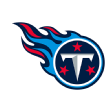
1. Tennessee Titans
The Titans picked up Marcus Mariota's fifth-year option, so he's locked in for 2019. But the former No. 2 overall pick's rookie deal is up after next season, and Tennessee could use the year to decide if it wants to commit to him long term. Given Mariota's injury history, plus his inconsistent play in new offensive coordinator Matt LaFleur's offense, the Titans could be a prime candidate to target Murray.
How would Murray fit here? Just look at how LeFleur adjusted his call sheet for Mariota, who rushed for 2,237 yards in college at Oregon but hadn't been used consistently in the QB run game in his first three NFL seasons. The Titans rank No. 5 in the NFL on rushing yards off zone-read/option plays -- 283 -- and we know the core route concepts would mesh with Murray's game. Think of the outside zone-run action paired to the intermediate throws in LaFleur's route tree. Create the open window, just as Oklahoma coach Lincoln Riley called up for Murray in the clip below against TCU. Stretch/outside zone with the inside, rhythm throw.
Mariota could flourish in LaFleur's offense in 2019, his second year in the system. There's an expected bump for QBs in that situation. But with the Titans registering only 55 explosive offensive plays this season -- third-fewest in the league -- landing Murray gives Tennessee a big-play threat at the position if Mariota isn't the answer.
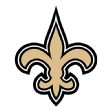
2. New Orleans Saints
Drew Brees turns 40 next month, and if the Saints let backup Teddy Bridgewater walk in free agency, I like the idea of New Orleans targeting Murray and developing him in Sean Payton's system. As we've seen this season, Payton will think outside of the box with his personnel. Just look at the versatility of Taysom Hill and the QB-designed runs in Payton's game plan. Hill has rushed for 185 yards and a touchdown on 34 carries in 2018.
In addition to the stress Murray could create for opposing NFL defenses in the QB run game, however, his quick release, accuracy and ball velocity can be featured in the passing game. Just look at Murray ripping the throw up the seam off play-action against Baylor in the clip below.
Payton is still the league's best playcaller when it comes to creating and exposing matchups. He can jump into 22 personnel (2RB-2TE-1WR) and hammer the ball downhill in the run game. He can generate open windows off play-action and misdirection or use leveled reads to influence defenders. Or he can simply spread out his playmakers to attack in the short to intermediate passing game. I would love to see Payton design specific plays for Murray right away while developing him to become the eventual starter in New Orleans.
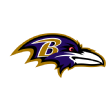
3. Baltimore Ravens
The Ravens are expected to move on from veteran Joe Flacco this offseason, and we've already seen coordinator Marty Mornhinweg change the entire offense for rookie Lamar Jackson. The game plan has been molded to fit Jackson's strengths with more designed runs, play-action, movement throws, run-pass options (RPOs) and inside verticals. That's a perfect fit for Murray, who has shown the ability to run the rock at Oklahoma, rushing for 892 yards on 123 carries this season.
Plus, the RPO and QB run designs carry over from Riley's offense, such as this lead draw in the clip below, when Murray ripped off an explosive play in the victory over Kansas.
The question: Why would Baltimore add another quarterback after drafting Jackson in the first round last April? For starters, it gives John Harbaugh and his staff an opportunity to build up their depth and develop another player in the system. And it gives the Ravens some insurance with the number of runs -- and hits -- Jackson has already taken. He has carried the ball 127 times for 605 yards and three scores this season. Since he became the starter in Week 11, Jackson has 99 carries -- an average of 16.5 per game. That's a huge number for an NFL quarterback.
I expect the Ravens' system to expand with Jackson in 2019. They have an entire offseason to build the passing game to facilitate more development. But the QB runs will always be a weapon for the Ravens, and that makes them a tough offense to plan against. Adding another quarterback who displays the upper-tier speed and open-field ability of Murray fits the offensive system in Baltimore.
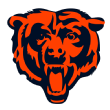
4. Chicago Bears
The arrow is starting to point up on second-year quarterback Mitchell Trubisky in new coach Matt Nagy's system. With his athleticism, vertical throws inside the numbers and ability to anticipate open windows, Trubisky is improving, and Nagy can script a productive game plan with those skills at the quarterback position. The tape tells us Trubisky is still developing the necessary traits to play consistently, however, and Nagy's knack for creativity on the call sheet opens the door to adding more depth and big-play ability in the quarterback room.
Under Nagy, the Bears rank No. 4 in the league in rushing yards off zone-read/options runs at 420, and they want to push the ball down the field, with 71 passes of 20 yards or more. That's good for the seventh-most attempts in the NFL. And we know Murray can make plays over the top of the defense. Plus, with Nagy's ability to generate misdirection in the game plan, it creates a road map for the QB: Get that open window, like Riley dialed up against Kansas State. Split-flow backfield action, show the bubble screen and clear space for Murray to throw the inside glance route. House call in the clip below.
Given the multiple personnel groupings and unique formation looks from Nagy this season, adding Murray would give the Bears another weapon. And I would bet on Nagy to feature Murray in situations that generate explosive plays while he develops and gets used to the NFL game.
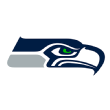
5. Seattle Seahawks
Russell Wilson is the unquestioned starter for the Seahawks, but why not put Murray as the No. 2 here? Brian Schottenheimer's run-heavy system features the zone-read and an efficient passing game, and Murray has the skill set to excel; he just put up the highest passing efficiency season in college football history.
The Seahawks rank No. 1 with 857 rushing yards on zone-read/option runs. That's Wilson in the gun reading the end man on the line of scrimmage. And the play-action, which leads to deep-ball windows, has allowed Wilson to dial up vertical throws off leveled routes. Again, this is a key trait in Riley's system. Just take a look at the touchdown throw against Texas Tech on the flood concept in the clip below. It's a boot scheme there, with Murray targeting the third level for the score.
As I said, the system works for Murray, and backup Brett Hundley is a free agent in 2019, leaving Wilson as the only QB on the roster. Murray would be allowed to develop behind Wilson here.
storyteller
Veteran
https://docupub.com/docs/bddfd807-ca7c-439b-96b2-4db07771ff8c/ESPN.com - Re-grading every NFL team's 2018 offseason moves.pdf
They take these down sometimes. Hopefully it stays up!
Dr. Narcisse
Veteran
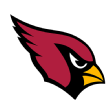
1. Arizona Cardinals
Nick Bosa, DE, Ohio State
General manager Steve Keim is going to have a chance to trade down and accumulate picks. He should take a look at it too, because this roster has been stripped of talent since the Cardinals went to the NFC Championship Game in 2016. But Bosa is going to be tough to pass up, as he is an elite pass-rusher. New defensive coordinator Vance Joseph is expected to switch this defense back to a 3-4, and Bosa has the versatility to play multiple spots. Give new coach Kliff Kingsbury a defensive stalwart opposite Chandler Jones who can get after Jared Goff, Russell Wilson and Jimmy Garoppolo twice a season.
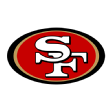
2. San Francisco 49ers
Josh Allen, OLB, Kentucky
The 49ers took defensive linemen in the first round in three straight years (2015 to '17), but DeForest Buckner is the only true star of the group. And none of those picks has the edge-rushing potential of Allen, who racked up 17 sacks for the Wildcats this season. If you're talking about pure pass-rushing ability, the 6-foot-5, 230-pound Allen is right up there with Bosa. San Francisco needs to add offensive weapons this offseason, but none is worth taking this high.
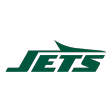
3. New York Jets
Quinnen Williams, DT, Alabama
The Jets will have the most 2019 cap space of any team, so expect them to be active in free agency. For now, I'll go with the best player on the board in Williams, who finished eighth in the voting for the Heisman Trophy this season. If new defensive coordinator Gregg Williams switches to a 4-3, Williams is a perfect fit as a 3-technique penetrator. Remember that the Jets don't have a second-round pick -- they dealt it in the Sam Darnold trade up last year -- so it's extra important that they hit here. New York does have an extra third-round pick from the Teddy Bridgewater trade.
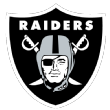
4. Oakland Raiders
Greedy Williams, CB, LSU
It's tough to predict what Jon Gruden and Mike Mayock will do with three first-round picks in this class, but fixing an aging defense should be a priority. The Raiders have needs across the board, including at pass-rusher -- they had a league-low 13 sacks in 2018. But with Bosa and Allen off the board, I'll go with a corner. Gareon Conley came on strong at the end of the season, but there's a hole across from the 2017 first-rounder. Williams is a big, 6-foot-3 corner with long arms and lockdown potential. The comp I've made for him is Aqib Talib.
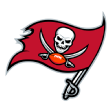
5. Tampa Bay Buccaneers
Jonah Williams, OT/G, Alabama
The Bucs could look very different under new coach Bruce Arians in 2019, as they have several key free agents (Kwon Alexander, Donovan Smith, Adam Humphries, among others), plus veterans (DeSean Jackson, Gerald McCoy) who are candidates to be released. Upgrading the offensive line should be a priority, however, and Williams has Pro Bowl potential at both guard and tackle. Washington's Brandon Scherff is the example I've used -- Williams made 43 straight starts at tackle for the Crimson Tide, but he has the frame (6-foot-5, 301 pounds) to easily move inside.

6. New York Giants
Dwayne Haskins, QB, Ohio State
This is an easy call. The Giants need a quarterback, and Haskins is the best quarterback in the class. The Giants can't afford to put off the decision for another year, even if they bring back 38-year-old Eli Manning and let the rookie learn behind him. Haskins (6-3, 220) is far from a finished product -- he started only 14 games at Ohio State -- but he has an extremely high ceiling. One thing to watch is whether QB-needy teams get aggressive and try to trade up to get in front of the Giants.
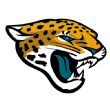
7. Jacksonville Jaguars
Cody Ford, OT/G, Oklahoma
Can the Jaguars pass on a quarterback in this draft? Here's why I'm going in a different direction: Despite the struggles in 2018, this roster is built to win now. Jacksonville has talent and is just a year removed from playing in the AFC title game. That's why I think Tom Coughlin & Co. will already have made their quarterback decision by April's draft, going with one of the free-agent options who is more likely to help the Jags win in 2019. Instead, let's upgrade a porous offensive line with Ford, a mauler who would slot in at guard or right tackle.
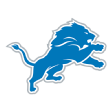
8. Detroit Lions
Devin White, LB, LSU
This is a spot to watch for a pass-rusher, as the Lions could part ways with free agent Ezekiel Ansah. In fact, coach Matt Patricia could use improvements at every level of his defense. White is a fly-to-the-football linebacker with similar athletic traits as Detroit middle linebacker Jarrad Davis, who was taken in the first round in 2017. The two could form a stellar tandem, as both are three-down linebackers. White isn't a true pass-rusher, but he makes plays in the backfield.
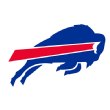
9. Buffalo Bills
Rashan Gary, DE/DT, Michigan
Could the Bills get their Kyle Williams replacement here? At his peak, the 6-foot-6, 283-pound Gary is a menace who makes offensive linemen look foolish, but you'd like to see him do it with more regularity. Gary could play end or nose guard in a 3-4 defense or tackle in a 4-3. Buffalo could look at centers or guards here; improving the interior of the offensive line should be a priority.
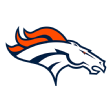
10. Denver Broncos
Deandre Baker, CB, Georgia
Former first-round pick Bradley Roby is a free agent, and Chris Harris Jr., who broke his leg in December, turns 30 over the summer. Cornerback is the No. 1 need for the Broncos. Baker isn't far behind Greedy Williams as the top corner in this class. General manager John Elway hit on his 2018 draft class, and he needs another good one to get the team back on track under new coach Vic Fangio.
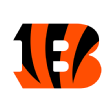
11. Cincinnati Bengals
Jawaan Taylor, OT, Florida
The Bengals have missed on a few offensive linemen in the draft in recent years, and there's still a hole at right tackle. That's where Taylor would slot in. He took a huge step forward playing on the right side in 2018, though there's still mixed opinion from people I trust in the league. Taylor is raw, but he has the tools to be a premier road grader in the running game.
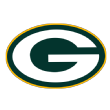
12. Green Bay Packers
Clelin Ferrell, DE, Clemson
Ferrell, who had 21 sacks the past two seasons, isn't a perfect fit in the Packers' 3-4 defense, but he's the best pass-rusher left on the board. Green Bay needs to add edge-rush help this offseason -- Clay Matthews and Muhammad Wilkerson are free agents -- and Ferrell (6-5, 265) could play end or outside linebacker here. The Packers will likely keep an eye on offensive playmakers too, and they have New Orleans' first-round pick from last year's draft-day trade.
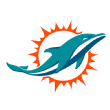
13. Miami Dolphins
Kyler Murray, QB, Oklahoma
The Dolphins need to rebuild. What better way to start that rebuild than to take the Heisman Trophy winner? Now, just because Murray has entered the draft doesn't mean he's sticking to football. He could still back out and play baseball. But I'm treating him as if he's all-in for now, and if he goes to the combine -- he's going to run a blazing 40-yard dash -- and goes through workouts for teams, I expect him to be picked in Round 1. This is an unprecedented situation for a 5-foot-10 quarterback, but it's going to be fun to watch over the next few months.
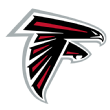
14. Atlanta Falcons
Ed Oliver, DT, Houston
If Grady Jarrett's price tag in free agency proves too much for the Falcons, Oliver is the perfect replacement as an interior game-wrecker. His tape was picked apart this season, and he was better in 2017, but he can dominate a game when he's playing at his best. He needs to keep developing as a pass-rusher, however. Oliver is only 21, and he has a high ceiling.

15. Washington Redskins
Jachai Polite, OLB, Florida
This is another potential landing spot for Kyler Murray. Alex Smith's scary injury put his future in jeopardy, and it wouldn't shock me if the Redskins added a young quarterback this offseason. Ultimately, I'm going with Polite, a perfect pass-rusher for a 3-4 defense who came on strong with 11 sacks this season. Former second-round pick Preston Smith has been inconsistent, and he's a free agent, so Polite makes sense as a replacement opposite Ryan Kerrigan. Safety is another position to watch, depending on what happens with free agent Ha Ha Clinton-Dix.
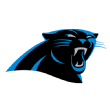
16. Carolina Panthers
Brian Burns, OLB, Florida State
Mario Addison led the Panthers with nine sacks this season, followed by five for the ageless Julius Peppers. Unless Peppers can play forever, this is a clear area of need for Carolina. The 6-foot-5, 235-pound Burns, who had 10 sacks in 2018, needs more time in the weight room, but he could grow into a defensive end.
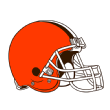
17. Cleveland Browns
Jeffery Simmons, DT, Mississippi State
The surging Browns hit on their 2018 draft class, led by Baker Mayfield, Denzel Ward and Nick Chubb. Can general manager John Dorsey do it again? My comp for Simmons is emerging Chiefs star Chris Jones, whom Dorsey picked in Round 2 when he was in Kansas City. Simmons is supremely athletic and already advanced in his technique as a pass-rusher. However, he will have to answer to NFL teams about his 2016 arrest during the pre-draft process.
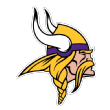
18. Minnesota Vikings
Greg Little, OT, Ole Miss
There's a case to be made that Little is the best true left tackle in this class. He's certainly the most talented. The former five-star high school prospect was inconsistent at times in college, but he should take off in an NFL strength and conditioning program. Coach Mike Zimmer loves guys who get after quarterbacks too, so that's going to be in consideration here.

19. Tennessee Titans
T.J. Hockenson, TE, Iowa
This might not look like a need on paper, but Delanie Walker is 34 and missed most of the season after a severe ankle injury. Hockenson can be a weapon. He is an all-around tight end, an excellent blocker and a good pass-catcher with a big 6-foot-5, 250-pound frame. The Titans will keep a close eye on playmakers for Marcus Mariota.
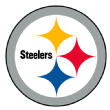
20. Pittsburgh Steelers
Devin Bush, LB, Michigan
The Steelers tied for the NFL lead with 52 sacks this season, but the weakness on defense was at inside linebacker, as they struggled to replace Ryan Shazier. The phrase I keep repeating about Bush is "perfect for today's NFL." He would be a great fit as a three-down linebacker who never has to leave the field. At 5-foot-11, Bush is undersized, but he should test well at the combine.

21. Seattle Seahawks
Oshane Ximines, DE/OLB, Old Dominion
How about this: Ximines is going to be the first prospect from Old Dominion to be picked in the NFL draft. Seriously: Check it out. He is an explosive pass-rusher -- 12 sacks in 2018 -- who has the versatility to play with his hand in the dirt or standing up on the edge. His game reminds me a little bit of DeMarcus Ware's, though Ximines has a ways to go. Pete Carroll is always looking for pass-rushers, and the Seahawks could lose Frank Clark in free agency.

22. Baltimore Ravens
A.J. Brown, WR, Ole Miss
Let's get a playmaker for Lamar Jackson. He's going to improve in Year 2, but he needs a better (and younger) supporting cast. And yes, the Ravens have a terrible track record in taking receivers, but they have to hit some time, right? Brown is explosive after the catch. Reminder: New general manager Eric DeCosta doesn't have a second-round pick as a result of the move up for Jackson last year, so this is an important pick.
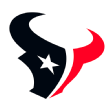
23. Houston Texans
Byron Murphy, CB, Washington
It will be a fascinating offseason for the Texans, who need to make decisions on free agents Jadeveon Clowney, Tyrann Mathieu and Kareem Jackson, among others. Corner sticks out as a need because Johnathan Joseph, the starter opposite Jackson, will be 35 when the 2019 season starts, and the big-money signing of Aaron Colvin last offseason looks like a miss. Murphy is still raw, but he's a ball hawk on the outside. He also has the versatility to play in the slot. Keep an eye on offensive line too, as Houston gave up a league-high 62 sacks this season.

24. Oakland Raiders (from CHI)
Marquise Brown, WR, Oklahoma
Can you name the Oakland player with the most receiving targets in 2018? It was ... tight end Jared Cook. And yes, Gruden traded top wideout Amari Cooper, but this roster needs pass-catching upgrades. Brown is going to be one of the fastest prospects in this draft. He can run every route, and he's tremendous after the catch. Size is the question, as he's only 5-foot-9, 168 pounds. He is more in the mold of John Ross, who went in the top 10 in the 2017 draft, than a typical No. 1 receiver. But he can be a downfield threat for Derek Carr.
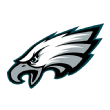
25. Philadelphia Eagles
Montez Sweat, DE, Mississippi State
With free agents Brandon Graham and Chris Long potentially moving on, Philadelphia could add some pass-rush help here. At 6-foot-6, 241 pounds, Sweat is a rangy prospect who is athletically gifted. And he produced, racking up 22 sacks the past two seasons. Receiver is also a position to watch, as Golden Tate and Mike Wallace are both on the free-agent market.
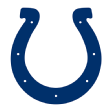
26. Indianapolis Colts
Dexter Lawrence, DT, Clemson
Lawrence is higher on my Big Board -- No. 17 -- but he won't fit every NFL team. At 6-foot-5, 340 pounds, he's the top nose tackle in this class, so he needs to find a team looking for a plugger in the middle. With Margus Hunt -- who had a stellar 2018 -- a free agent, the Colts could have a need along the interior of the line. Lawrence can disrupt a pocket and hold up against the run, but he's never going to be an elite penetrator like Quinnen Williams.

27. Oakland Raiders (from DAL)
Irv Smith Jr., TE, Alabama
I don't have another Round 1 edge rusher left on my board, so I'm moving on to tight end with the third Raiders pick of the first round. I mentioned Cook earlier, and he's a free agent, so this is going to be a need for Oakland. Smith had 44 catches and seven touchdowns for the Crimson Tide this season, and he is a really good player. He needs to improve as a blocker, but I expect him to test well at the combine. The Raiders have a ton of cap space, so they also could address the position in free agency.
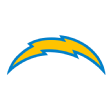
28. Los Angeles Chargers
Christian Wilkins, DT, Clemson
Did you see the Patriots punish the Chargers up front in the AFC divisional round? They were pushed around. The 6-foot-4, 310-pound Wilkins would be an improvement. He could plug the nose for L.A. and also bump outside to end. He was a four-year starter for the Tigers and always showed up on tape; he had 15 tackles for loss in 2018. Derwin James was one of the stars of the Class of 2018, and the Chargers have a solid roster. Let's get them past the divisional round.
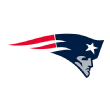
29. New England Patriots
Daniel Jones, QB, Duke
Tom Brady is going to be 42 when the 2019 season begins. Forty-two! It's unbelievable what he's continuing to do on the field, but the Patriots have to start thinking about the future ... right? Jones could be the heir apparent. He has learned from quarterback guru David Cutcliffe at Duke, and you see it in his footwork. He excels in the pocket. Jones is athletic too, and he has a big, 6-foot-4 frame. There's no guarantee that Jones will be the third quarterback off the board, and you can see more of him at the Senior Bowl next week, but this fit makes a lot of sense.

30. Los Angeles Rams
Dre'Mont Jones, DT, Ohio State
You can't discount the Rams trading out of this spot -- they didn't pick until No. 89 last year. But since there are no trades allowed here, let's give Wade Phillips a piece with which to work. Ndamukong Suh will likely move on in free agency, which means there's an open spot next to all-world interior pass-rusher Aaron Donald. Jones, who had 8.5 sacks in 2018, is an athlete. He could even play end for L.A.
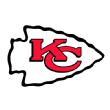
31. Kansas City Chiefs
Deionte Thompson, S, Alabama
Eric Berry has played 154 snaps the past two seasons. There's no guarantee that the 30-year-old will get back to an All-Pro level, and we know the weakness for this defense is in the secondary. Thompson would help immediately. He's a rangy playmaker with supreme athletic traits, though he was inconsistent down the stretch in 2018. We know the Chiefs' offense is loaded, but a safety or corner would boost the defense.

32. Green Bay Packers (from NO)
Parris Campbell, WR, Ohio State
Free-agent Randall Cobb is probably finished in Green Bay, and Aaron Rodgers needs some help. Campbell was one of the most electric players in college football in 2018, and he could move even higher after athletic testing at the combine. He caught 90 passes and scored 12 touchdowns this season. Let's see what Matt LaFleur & Co. cook up with an athlete such as Campbell.
954UAlreadyknow
All Star
How Ja Morant became a surprise top-three draft prospect
Lance Stephenson's air guitar celebration. Russell Westbrook's rock-the-baby boast. An Instagram post that read: "Jump wit Me if you want to go viral" after yet another jaw-dropping dunk.
Save for Zion Williamson, Murray State phenom Ja Morant is the most exciting player in college basketball.
The baby-faced beanpole snatches souls with ferocious two-footed jams, exploding 44 inches off the ground before cocking the ball back and delivering yet another slam. He puts defenders on skates with his ball-on-a-string handle. He whips passes all over the floor. The Racers play fast, they score often, and Morant (No. 3 in ESPN's top 100 draft rankings) is the catalyst.
"It's almost like he's been here before," said Tee Morant, Ja's father. "With this whirlwind going on, it seems like it doesn't even bother him."
How is it that a late-developing, small-town guard who weighs 175 pounds soaking wet can have so much confidence and swagger, regardless of the opponent? And how will his game translate to the next level?
The 19-year-old has been groomed for this stage since his early childhood. He was built for the spotlight.
The backstory
The Morant family is known for its cookouts and basketball sessions outside its country home in Dalzell, South Carolina. Spaghetti, shepherd's pie, hot dogs, fries, you name it. No kid or coach went home hungry.
"[Ja's mother, Jamie Morant] makes a pizza casserole that is unbelievable," said Murray State head coach Matt McMahon. "Just phenomenal. I don't want to put Tee's grilling skills down, but Jamie's pizza casserole is No. 1 for me."
Whether Tee was at the barbershop cutting hair or in the backyard training players, the Morant household had an open-door policy. Anyone was welcome, and the street was regularly lined with cars.
"It was nothing for me and my wife to wake up in the morning and there were 14 kids laying on our floor asleep," Tee said.
It was during these early years that Morant's showmanship and seemingly unflappable mentality were born. Morant's parents had him dancing or performing in front of big crowds at family cookouts by age 4. He hated the dancing at first, but as he got more and more reps, Morant turned into a regular entertainer. Soon he was doing Michael Jackson impersonations around Christmas time.
"I guess I can say that's what really broke me out of the habit of being nervous in front of a lot of people and performing," Morant said. "I don't do no more like that, but I got a little rhythm."
Morant developed his game in the backyard with his dad. Two-ball dribbling, tennis balls, anything to get his handle tight. Although skilled and blessed with feel at a young age, an undersized Morant wasn't jumping out of the gym.
"I used to always be like, 'Man, this kid is slow,'" Tee said with a laugh.
With an open backyard and a quarter court, Tee bought parachutes for his son to run with in order to build his athleticism. He had Morant jumping on the tractor tires to try to build his vertical. After every drill, Ja would jump on the tire 25 times, and by the end of the day he'd have gotten anywhere from 250 to 300 jumps in.
Tee and Ja would work on separation drills, a necessity given his size at 5-foot-6 entering eighth grade. They never drew lines on the court, either, as Tee didn't want the 3-point arc to limit his son's range.
"Dude was shooting from half court in high school," said one college coach.
The skill set was there for Morant, but he was still behind physically. Going into his freshman year he grew to about 5-10. Although still a toothpick, he spent long hours in the backyard -- now a full court -- not only working on his own game but also helping Tee train kids for a little extra cash. He and Ole Miss guard Devontae Shuler put in work, doing everything from ball handling to shooting to defensive slides.
"Great sessions," Shuler said. "Competing, going at it. That's his dad's mentality -- go at it. He's got that dog mentality, and that's how Ja is, he's got that dog mentality. He don't let things get to him. He's from a great family, real good family."
Morant joined the South Carolina Hornets -- a non-shoe-company club -- the summer going into his sophomore season, teaming up with Zion Williamson before the Duke star's legend really took off. Morant's first Division I offer didn't come until early in his junior season, via South Carolina State.
The offers weren't exactly pouring in, at least until Murray State finally discovered Morant the summer before his senior season. As the legend goes, Morant was a late add to the Chandler Parsons Camp. Then-assistant coach James Kane drove eight hours to the camp to see Murray State target Tevin Brown.
After a few hours on the job, Kane went looking for a quick snack and happened to see Morant playing three-on-three in the auxiliary gym. Kane was intrigued by Morant, and asked the program organizer what his deal was, as he wasn't on the original roster. Kane was then introduced to Tee Morant, and the relationship building began. Kane called McMahon immediately, and the Racers head coach was on the next flight out of Atlanta.
"Right away you just saw the athleticism and the explosiveness, the creativity and his ability to make plays for not only himself but for others," McMahon said. "He always had the flair. The creativity, the flair."
McMahon followed Morant to Greensboro, North Carolina, the next weekend. After the skinny guard went for 51 points in one game, it was clear Morant was the real deal -- no longer buried under the radar.
Fast-forward to present day, and Morant is now the face of Murray State basketball and a potential top-three pick in the 2019 NBA draft. He's the catalyst of a Racers team that took both Alabama and Auburn to the brink, and has all the ingredients for a run in March. Like those days in his Dalzell backyard, the vibe is light in Murray, Kentucky.
At a shootaround in Murray the day of the UT-Martin game, the family atmosphere was clear. Everyone from the head coach to the assistants were splashing deep jumpers, playing shooting games in the allotted 15 minutes before the start of actual shootaround.
Morant, donning pink Nike's, was at the center of it all -- just one of the guys on an uptempo team that eventually made light work of UT-Martin, winning 98-77. Morant finished with 18 assists and a monster dunk that landed No. 1 on SportsCenter's top plays.
"He asked me about that dunk -- I kind of fabricated a little bit when he asked me what I think about him dunking over the 6-8 guy," Tee said. "I told him I like the 18 assists better."
Morant is full of flash, excitement and bravado, yet humble at his core. He'll repost his dunks or highlights, clearly seeing the attention. Yet he doesn't forget the days when South Carolina State and Maryland Eastern Shore were his only offers, keeping the ever-lasting chip on his shoulder.
"Ja is just Ja -- Ja is what you see now," Jamie said. "He hasn't changed, at all. ... I can sit and watch his videos over and over again, because I'm like, 'Really, Ja, you really doing all this?'' Honestly, it's surreal. It's like, OK, he's finally getting what he deserves."
How does his game translate to the NBA?
Morant is averaging a remarkable 24.8 PPG, 6.3 RPG and 10.7 APG while shooting 61.7 percent from 2-point territory and 35.1 percent on 3-pointers. No college player in our extensive database has touched such numbers, and those who have come close haven't done it with his efficiency, as he sports a 64.8 true shooting percentage through 15 games.
So what makes Morant so intriguing as a pro prospect?
Open-court play
According to Synergy Sports, Morant is one of only five Division I players who has used more than 110 transition plays, and he's far and away the most efficient of the bunch. He changes ends in a blur, weaving through traffic with tremendous body control. Once he gets to his two-footed launching pad, shot-blockers beware. He's capable of taking off from well outside the charge circle.
He puts pressure on the rim in the open court, knocks down a pull-up 3 if given time and space, and hands out open-court dimes as well as any guard in the country. In fact, Morant ranks No. 2 in the NCAA in transition assists with 50.
Simply put, for a young, rebuilding NBA team with shooting and athletes, Morant is the perfect lead guard to excite a lackluster fan base with his open-court play.
Facilitating
While the explosiveness is what pops, Morant's willingness and ability to make his teammates better carries considerable weight among NBA front offices.
Morant is an analytics wonder as a passer, with 53.1 percent of his assists coming at the rim and 39.7 percent coming on 3s. While the bulk of his playmaking comes in the open court, he's capable against a set defense, making a handful of his passes by way of his left hand off a live dribble. Having charted all of Morant's 181 assists, 33 of them have come off left-handed passes.
"In my head I think I'm left-handed," Morant told ESPN. "Just growing up I used to shoot with my right. I write with my right hand, but that's just because I was shooting everything with my right, so that's why."
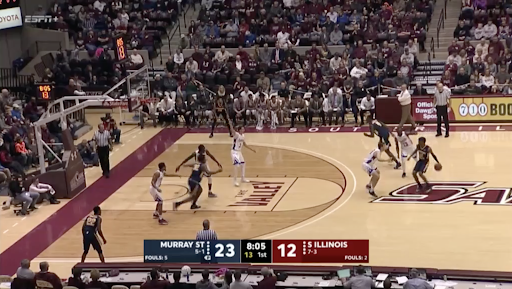
He uses his left hand on lob passes or to hit the weakside corner on a pick-and-roll, as you can see above. He has excellent touch as a facilitator, and it's that ambidexterity, along with the fact that he doesn't need to gather the ball with two hands to deliver it, that make him an intriguing playmaker.
Breaking down defenses
Morant's ability to shift gears on a dime should make him a nightmare cover with NBA spacing, especially once he develops a reliable jumper. He can play slow to fast or high to low, changing speeds and directions on a dime. He's an instinctual ball handler who slithers his way to spots on the floor, not shying away from contact when he gets to his launching pad.
"I'm a big Russell Westbrook fan," Morant said. "That's really how I try to play, all around game."
While he can stand to add more finesse as a finisher, Morant's ambidexterity is a major plus. Of his 97 shots at the rim in the half court, 44 have been right-handed, 28 were left-handed and 25 were two-handed (dunks, power finishes). Morant has converted 64 percent of his left-handed finishes and 55 percent with his right. He has a strong finishing base when moving forward.
Off-the-ball potential
While clearly at his best with the ball in his hands, Morant is actually fairly comfortable playing off the ball. He's an outstanding cutter when he's fully engaged, and he's more efficient shooting off the catch than the dribble at this stage, which wasn't the case in a small sample last season.
You don't draft him to take the ball out of his hands, but the fact that Morant isn't a stranger to existing in lineups with other ball handlers bodes well long-term.
What are we still learning about Morant?
How he'll fare defensively
Because he carries such a large load offensively, Morant is no stranger to getting his rest on the defensive end, especially off the ball. He has the feet to stay in front in one-on-one situations, and he likes to show off his bounce or speed in defensive playmaking scenarios. But he's too often upright in his stance when defending the ball in pick-and-roll, and he dies on screens at times, not always hustling to get back for a rear-view contest.
Off the ball he stands around quite a bit, late on rotations and allowing shooters to get open looks. Because he's so slight, Morant will need to turn up his defensive intensity in terms of doing the little things that affect winning. That's where Morant differs from a guard such as De'Aaron Fox, whom he's often compared to. He's not quite the defensive competitor that Fox was, which is partially a product of the offensive load he shoulders.
Morant likely doesn't project as more than a one-position defender long term. On the bright side, having seen Morant in a different setting at last summer's CP3 Youth Camp, he doesn't shy away from a challenge and figures to be more feisty defensively when the competition rises.
Pull-up shooting
The pull-up jumper is an important shot for starting NBA point guards now. While Morant has gotten better, this is an area where he still has questions to answer. Some scouts have compared his pull-up shooting unfavorably to Dennis Schroder's.
Morant attempted only 23 pull-up jumpers in 32 games last season, and he's generating only 0.83 points per possession on 54 attempts so far this season. He shoots a somewhat low-and-slow set shot, and he hasn't looked all that dynamic getting to it, either. As was the case with Fox as a rookie, teams are likely to dare Morant to shoot in hopes of keeping him out of the paint. Although he's converting 37.5 percent on such situations, Morant has taken only 24 3s when teams go under this season, and he'll have to continue getting better as he develops.
It wouldn't be shocking to see Morant's efficiency take a bit of a dive as a rookie given that he's not the most imposing physical presence and he's not a dynamic pull-up shooter. He actually has had some trouble scoring efficiently in late-clock situations. Morant also ranks in the 48th percentile in pick-and-roll situations, partially due to his somewhat shaky pull-up shooting. He's so used to finding success in transition or creating early offense. Becoming more comfortable snaking ball screens and playing in traffic against different coverages will help his game.
Floater game
One way that guards with Morant's frame and still-developing jumpers often combat NBA-caliber defenses is with a floater game. Morant has yet to show that ability, as he's 2-of-11 on floaters this season and was 4-of-18 a year ago.
Of course, he can live at the free throw line whenever he wants, and he has hops, but adding more finesse in the paint will be beneficial long-term.
Half-court reads
Based on his passing metrics and the tremendous instincts, there shouldn't be much concern in regard to Morant's facilitating, but he still has some fine-tuning to do in the half court. More than 30 percent of his assists come in transition. Learning how to manipulate defenses with his eyes and quarterback the offense against a set defense will ease his transition to the NBA.
A total of 20 percent of his assists have also come via overhead passes, as he has been able to use his size at the mid-major level -- a luxury he won't have in the NBA. He's no stranger to losing avoidable turnovers, oftentimes opting for flash over substance while sporting a 23.0 turnover percentage in pick-and-roll. These improvements areas are important, but Morant has still improbably captured the attention of every NBA general manager.
"They finally put South Carolina on the map," Shuler said.
How he'll fare defensively
Because he carries such a large load offensively, Morant is no stranger to getting his rest on the defensive end, especially off the ball. He has the feet to stay in front in one-on-one situations, and he likes to show off his bounce or speed in defensive playmaking scenarios. But he's too often upright in his stance when defending the ball in pick-and-roll, and he dies on screens at times, not always hustling to get back for a rear-view contest.
Off the ball he stands around quite a bit, late on rotations and allowing shooters to get open looks. Because he's so slight, Morant will need to turn up his defensive intensity in terms of doing the little things that affect winning. That's where Morant differs from a guard such as De'Aaron Fox, whom he's often compared to. He's not quite the defensive competitor that Fox was, which is partially a product of the offensive load he shoulders.
Morant likely doesn't project as more than a one-position defender long term. On the bright side, having seen Morant in a different setting at last summer's CP3 Youth Camp, he doesn't shy away from a challenge and figures to be more feisty defensively when the competition rises.
Pull-up shooting
The pull-up jumper is an important shot for starting NBA point guards now. While Morant has gotten better, this is an area where he still has questions to answer. Some scouts have compared his pull-up shooting unfavorably to Dennis Schroder's.
Morant attempted only 23 pull-up jumpers in 32 games last season, and he's generating only 0.83 points per possession on 54 attempts so far this season. He shoots a somewhat low-and-slow set shot, and he hasn't looked all that dynamic getting to it, either. As was the case with Fox as a rookie, teams are likely to dare Morant to shoot in hopes of keeping him out of the paint. Although he's converting 37.5 percent on such situations, Morant has taken only 24 3s when teams go under this season, and he'll have to continue getting better as he develops.
It wouldn't be shocking to see Morant's efficiency take a bit of a dive as a rookie given that he's not the most imposing physical presence and he's not a dynamic pull-up shooter. He actually has had some trouble scoring efficiently in late-clock situations. Morant also ranks in the 48th percentile in pick-and-roll situations, partially due to his somewhat shaky pull-up shooting. He's so used to finding success in transition or creating early offense. Becoming more comfortable snaking ball screens and playing in traffic against different coverages will help his game.
Floater game
One way that guards with Morant's frame and still-developing jumpers often combat NBA-caliber defenses is with a floater game. Morant has yet to show that ability, as he's 2-of-11 on floaters this season and was 4-of-18 a year ago.
Of course, he can live at the free throw line whenever he wants, and he has hops, but adding more finesse in the paint will be beneficial long-term.
Half-court reads
Based on his passing metrics and the tremendous instincts, there shouldn't be much concern in regard to Morant's facilitating, but he still has some fine-tuning to do in the half court. More than 30 percent of his assists come in transition. Learning how to manipulate defenses with his eyes and quarterback the offense against a set defense will ease his transition to the NBA.
A total of 20 percent of his assists have also come via overhead passes, as he has been able to use his size at the mid-major level -- a luxury he won't have in the NBA. He's no stranger to losing avoidable turnovers, oftentimes opting for flash over substance while sporting a 23.0 turnover percentage in pick-and-roll. These improvements areas are important, but Morant has still improbably captured the attention of every NBA general manager.
"They finally put South Carolina on the map," Shuler said.